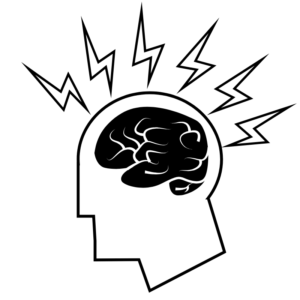
Acute versus Chronic Pain
How pain affects your body and mind in the short and long term
Acute pain
- Comes on suddenly
- Lasts less than 6 months
- Is tied to a specific injury or condition
- Helps to warn us that we need time to heal
Chronic pain
- Is persistently present
- Pain signals are active for months or years
- May not have a known cause, or linger after an injury is healed
- May leave victims dealing with physical or emotional issues that stem from the pain
In short…
Acute pain is dealt with by dealing with an underlying issue
There’s nothing in-and-of-itself wrong with acute pain
Chronic pain may not have an explicable cause
And leads to long-term debilitation, medical costs, and lowered quality of life.
Acute pain affects everyone at some point (100%)
Chronic pain affects one in five adults in America (20%)
With one in twelve American adults having high-impact chronic pain (8%).
Chronic pain is a big deal
With over 41 million American adults suffering
Profile of a chronic pain sufferer:
Likelier to be a woman
Likelier to be non-hispanic white
Likelier to have lower education attainment
Likelier to live near poverty
Likelier to be a veteran
Chronic pain affects us all, but particularly the most vulnerable among us.
With an issue that big, someone has to pay…
In 2018 chronic pain cost $635 billion in health care and indirect costs.
More than diabetes, heart disease, and cancer COMBINED.
Chronic pain often crosses bodily systems. Leading to complex and lacking medical solutions.
In short, it adds up….
Mean annual medical expenses for all American adults: $4,475
Mean medical expenses for American adults with moderate pain $4,922 (+10%)
Mean medical expenses for American adults with severe pain: $4,967 (+11%)
Mean medical expenses for American adults with arthritis: $5,593 (+25%)
Mean medical expenses for American adults with joint pain: $5,951 (+33%)
While health expenses for pain are lower than other serious conditions, total costs are often higher.
Including:
Lowered productivity
Missing work days
Inability to work
Inability to perform routine tasks
Inability to enjoy hobbies
(indirect costs of chronic pain)
It should come as no surprise that pain is big business
With opioid makers cashing some of the largest pain-related checks
1 in 200 individuals prescribed short term opioid treatment for post-operative pain end up chronically misusing opioids
For each week of use chances of misuse increase 20%
For each opioid prescription refill chances of misuse increase 44%
Don’t let yourself buoy a pharmaceutical’s quarterly report.
Thankfully, advances in less risky pain management are making leaps and bounds
Led by:
Cognitive Behavioral Therapy
Non-Pharmaceutical Supplements Treatments
Body Science
Neuroscience
Learn to live a more pain-free life with Painhacks.org
Citations:
https://www.cdc.gov/mmwr/volumes/67/wr/mm6736a2.htm
https://www.sciencedaily.com/releases/2012/09/120911091100.htm
https://www.uptodate.com/contents/prescription-of-opioids-for-acute-pain-in-opioid-naive-patients
